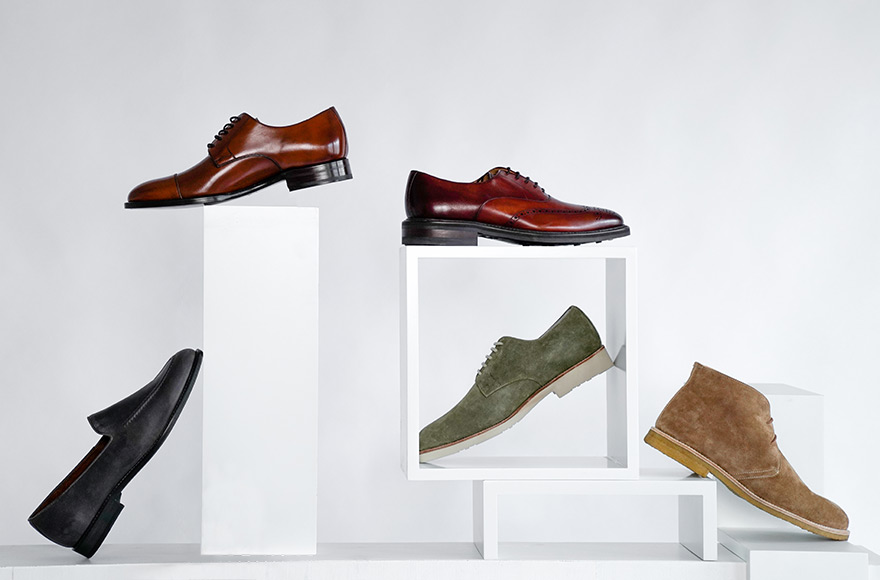Simply finding the correct shoe size isn’t enough to find the right shoe. Identifying the proper shoe width for accommodating the front of the foot is equally important towards achieving ideal shoe fit.
Shoe width shouldn’t be confused with shoe breadth. Shoe width is calculated by measuring the distance between the widest points on the foot (the ball width): at the base of the toes, from the outer edge of the foot to its inner edge. The ball width traces an imaginary line that runs between the balls of the largest and smallest toes (the »ball line«). The height of the instep is also taken into account. These two factors are then used to determine the appropriate shoe width.
Average feet range in shoe width from E to G
Unfortunately, as is the case with shoe sizes, there is no universally accepted ordering principle for shoe width. In other words, there are no official, standardized regulations in place that dictate to manufacturers how wide shoes should be, or how these widths should be labelled. Usually, the reasoning behind this is mundane: wider shoes are supposedly less aesthetically pleasing, so they aren’t as commonly produced. Every manufacturer, of course, has their own preferences, and as a result it’s difficult to compare the widths of shoes made by different craftsmen. Adding to the confusion: recent studies have shown that shoe width has dramatically increased over the past 40 years—feet are becoming wider, and old systems of measurement could soon become obsolete.
Across the globe, shoe width is usually expressed in letters (A through I). The average range consists of shoe widths E, F, and G. An individual wearing size E has feet that fall on the narrow side of average; individuals wearing size F or G have feet that fall on the broader side of average. Those with even broader feet should reach for sizes H or I. In some cases, double-letter sizes are available (American linear measure), as are numbered sizes (Continental European linear measure). An overview of different sizing systems can be found on our shoe size conversion page.
Leather is the only material that ensures perfect shoe width
Along with selecting the correct shoe size, selecting the correct shoe width ensures a perfect shoe fit. This, in turn, enhances wearing comfort, extends the life of high-quality men’s shoes, and promotes foot health. Lower-priced footwear is typically made of low-quality synthetic materials, which, unlike leather, don’t adjust to the shape of the foot during wear. Feet are often somewhat smaller in the morning than they are in the evening—this poses no problem for leather shoes, which maintain an ideal width by adjusting to humidity and warmth, as well as expanding along with the foot.
Choosing the correct shoe width benefits both shoe and wearer
When the correct shoe width has been chosen, the wearer will notice a close—but not overly snug—fit along the broadest part of the foot (the »ball line«). When the shoe is too wide, the foot will slide forward inside of the shoe, which will cause the heel to rise, thereby damaging the shoe. When the shoe is too narrow, the shoe will quickly wear out; its durability will be compromised, and the joints at the base of the toes will suffer from being crammed into too tight of a space.
Additional shoe fit categories
Handmade Leather Shoes at Shoepassion.com
Classic Shoes for men & women ★ Various styles & designs ★ High quality ★ Fair & sustainably produced in Europe ★ Exellent value for money ★ Many models on sale














